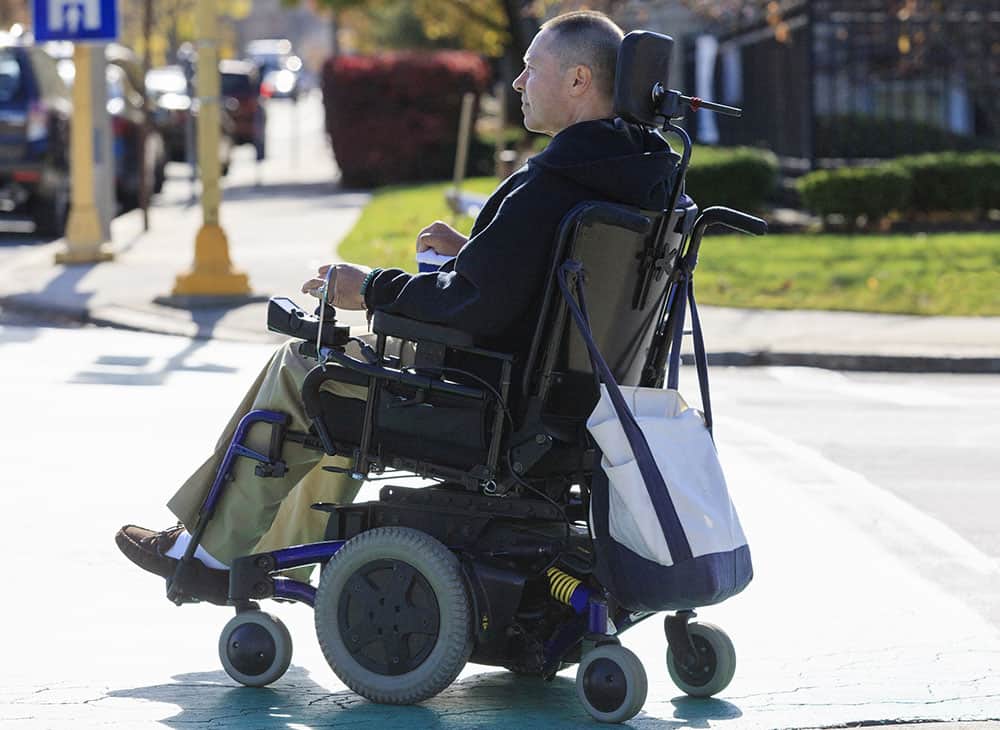Important advice for powerchair manufacturers regarding EU requirements and standards

A global inspection, verification, testing and certification company has outlined for electric wheelchairs manufacturers which requirements and standards their products must meet before they can be offered onto the market in the European Union (EU).
Expert product testers SGS says manufacturers are reminded that their products must be safe, robust and conform to the requirements in Annex I of the European Medical Device Directive 93/42/EEC before they can be offered into the EU.
The company highlights that as wheelchairs are classified as Class I under the European Medical Directive, the manufacturer is responsible for declaring the product complies with the directive, requiring adequate testing against the correct standards.
In spite of being required to ensure compliance, manufacturers are not required to consult an independent Notified Body points out SGS, due to electric wheelchairs being supplied in a non-sterile condition and not having a measuring function.
Under the terms of the European Medical Directive, manufacturers must compile a technical dossier containing, among other things, risk analysis and their own Declaration of Conformity (DoC) that the product conforms to applicable standards.
Following this, the manufacturer can place the CE mark on its product to show compliance.
Mobility vehicle classifications
Wheelchairs and scooters are classified according to their intended use:
- Class A – indoor use
- Class B – some indoor environments and capable of some outdoor obstacles
- Class C – for travelling over longer distances and capable of negotiating outdoor obstacles. Often larger in size
Standards applying to mobility vehicles
Applicable standards for wheelchairs and scooters are:
- EN 12183 for manual wheelchairs
- EN 12184 for electric wheelchairs and scooters
- ISO 7176-series – the internationally accepted series of standards that describe the various testing methods for wheelchairs and scooters
Understanding standard EN 12184
First published in 1999, EN 12184 is now on its fourth iteration – EN 12184:2014. It covers:
- Electrically powered wheelchairs
- Electrically powered scooters with three or more wheels
- Battery chargers for the above
It applies to products where the maximum speed does not exceed 15km/h and that are intended to carry only one person with a mass no greater than 300kg.
Covering several aspects of wheelchair design, the standard includes:
- Biocompatibility and toxicity
- Safety of moving parts
- Prevention of human body part entrapment
- Clinical evaluation
- Ergonomics
- Risk analysis
The standard largely relies on normative reference documents, especially for test methods, explains SGS, pointing out that the standard in particular references the ISO 7176 series, either whole or in part.
Therefore, evaluation against the ISO 7176 series will confirm adherence to EN 12184 for manufacturers of electric wheelchairs, advises SGS.
ISO 7176 references in standard EN 12184
The ISO 7176 documents referenced in EN 12184 are:
Mechanical tests
- ISO 7176-1 Static stability
- ISO 7176-8 Test methods for static, impact and fatigue strengths
- ISO 7176-11 Test dummy
- ISO 7176-13 Determination of coefficient of friction of test surfaces
- ISO 7176-15 Information disclosure, documentation and labelling
- ISO 7176-22 Set-up procedures
Electrical tests
- ISO 7176-2 Dynamic stability
- ISO 7176-3 Test for determination of the effectiveness of running brakes
- ISO 7176-4 Energy consumption, theoretical distance range
- ISO 7176-6 Maximum speed, acceleration and deceleration
- ISO 7176-9 Climatic tests
- ISO 7176-10 Obstacle-climbing ability
- ISO 7176-14 Power and control systems for electrically powered wheelchairs and scooters
- ISO 7176-21 Electromagnetic compatibility
Underlining that it offers a range of services to help manufacturers of electric wheelchairs access the European market, SGS reemphasized that while consulting an independent Notified Body is not mandatory, the manufacturer must perform correct testing to ensure products adhere to applicable EU regulations.
https://thiis.co.uk/important-advice-for-powerchair-manufacturers-regarding-eu-requirements-and-standards/https://thiis.co.uk/wp-content/uploads/2019/05/Man-in-motorized-wheelchair-crossing-public-street-SGS.jpghttps://thiis.co.uk/wp-content/uploads/2019/05/Man-in-motorized-wheelchair-crossing-public-street-SGS-150x150.jpgGovernment & Local AuthoritiesNewsroomSupplier Newscertification,Declaration of Conformity,electric Wheelchair,EU,inspection,Medical Device Directive,mobility scooter,powerchair,powered wheelchair,regulations,requirements,SGS,standardsA global inspection, verification, testing and certification company has outlined for electric wheelchairs manufacturers which requirements and standards their products must meet before they can be offered onto the market in the European Union (EU). Expert product testers SGS says manufacturers are reminded that their products must be safe, robust...Calvin BarnettCalvin Barnettcalvin.barnett@bhta.comAuthorTHIIS Magazine

